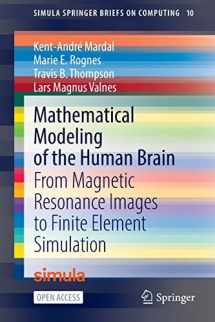
Mathematical Modeling of the Human Brain: From Magnetic Resonance Images to Finite Element Simulation (Simula SpringerBriefs on Computing)
Book details
Summary
Description
This open access book bridges common tools in medical imaging and neuroscience with the numerical solution of brain modelling PDEs. The connection between these areas is established through the use of two existing tools, FreeSurfer and FEniCS, and one novel tool, the SVM-Tk, developed for this book. The reader will learn the basics of magnetic resonance imaging and quickly proceed to generating their first FEniCS brain meshes from T1-weighted images. The book's presentation concludes with the reader solving a simplified PDE model of gadobutrol diffusion in the brain that incorporates diffusion tensor images, of various resolution, and complex, multi-domain, variable-resolution FEniCS meshes with detailed markings of anatomical brain regions. After completing this book, the reader will have a solid foundation for performing patient-specific finite element simulations of biomechanical models of the human brain.
From the Back Cover
This open access book bridges common tools in medical imaging and neuroscience with the numerical solution of brain modelling PDEs. The connection between these areas is established through the use of two existing tools, FreeSurfer and FEniCS, and one novel tool, the SVM-Tk, developed for this book. The reader will learn the basics of magnetic resonance imaging and quickly proceed to generating their first FEniCS brain meshes from T1-weighted images. The book's presentation concludes with the reader solving a simplified PDE model of gadobutrol diffusion in the brain that incorporates diffusion tensor images, of various resolution, and complex, multi-domain, variable-resolution FEniCS meshes with detailed markings of anatomical brain regions. After completing this book, the reader will have a solid foundation for performing patient-specific finite element simulations of biomechanical models of the human brain.


We would LOVE it if you could help us and other readers by reviewing the book
Book review



